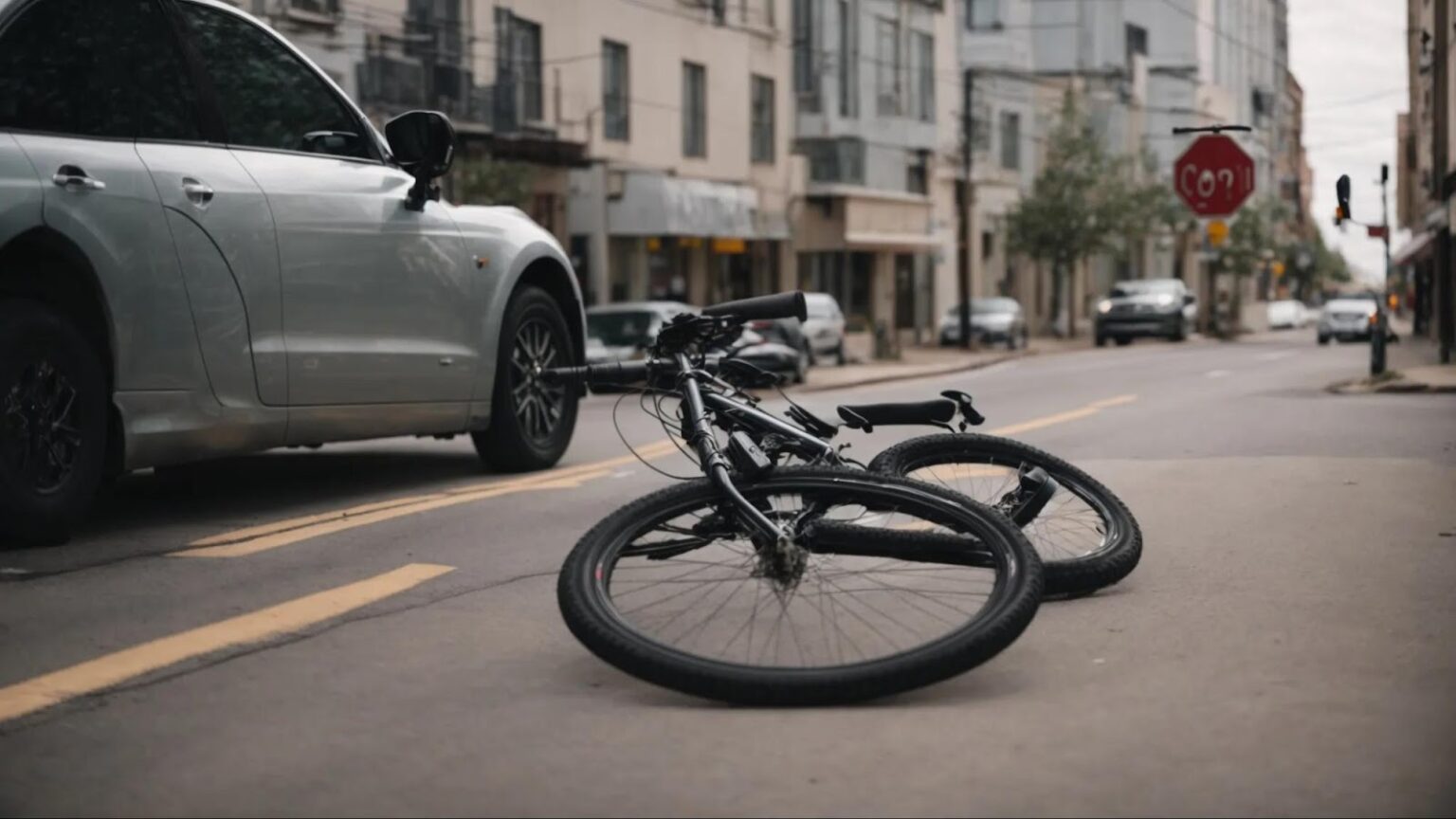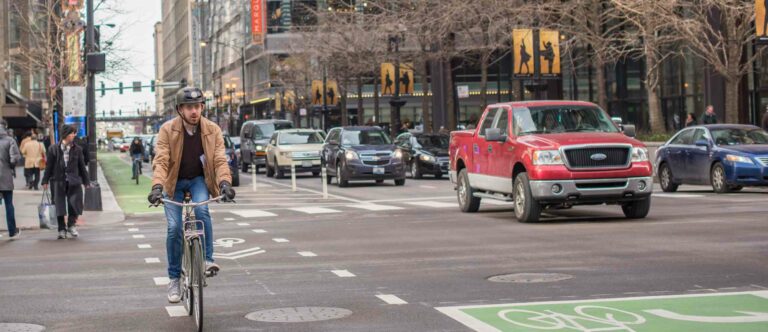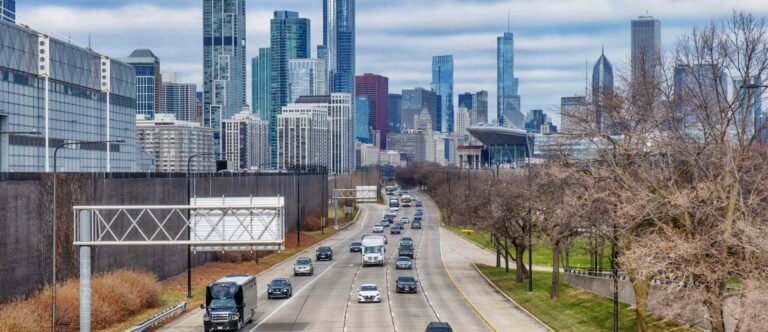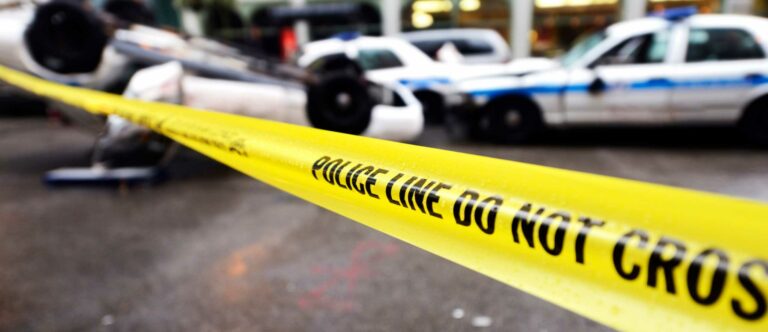Navigating through the bustling streets of Chicago, bicyclists face a myriad of risks each day, making mishaps all too common.
From the unpredictable behavior of motor vehicles to the challenges posed by the urban environment itself, the reasons behind bicycle accidents can vary greatly.
Nevertheless, certain factors, such as the influence of alcohol and drugs or the absence of appropriate bike lights and reflective clothing, significantly heighten the danger.
In this article, we’ll embark on a detailed exploration of the primary causes of bicycle mishaps in Chicago, shedding light on the perilous journey cyclists often endure.
Key Takeaways
- Chicago’s Dense Traffic and Poor Cycling Infrastructure Significantly Increase the Risk of Bicycle Accidents
- Misunderstandings Between Cyclists and Drivers Regarding Road Rules Frequently Lead to Dangerous Situations
- Hazardous Weather Conditions Exacerbate the Challenges of Cycling in Chicago
- Impaired Cycling Due to Alcohol or Drugs Contributes to the City’s Bicycle Accident Statistics
- Proper Lighting and Reflective Gear Are Essential for Cyclist Visibility and Safety, Especially at Night
Why Do Bicycle Accidents Happen in Chicago?
The bustling streets of Chicago present a complex maze of challenges for cyclists, contributing to the prevalence of bicycle accidents experienced by personal injury lawyers.
Navigating through the heavy urban traffic requires split-second decisions and an acute awareness of one’s surroundings, a challenge compounded by limited visibility in congested areas where cyclists are easily obscured by larger vehicles. In the unfortunate event of a drunk driving accident, seeking an experienced personal injury lawyer is crucial to navigating legal complications and securing rightful compensation.
Adding to the peril, confusing road layouts and omnipresent construction zones often force cyclists into dangerous situations, while discrepancies in understanding road rules between cyclists and drivers lead to critical miscommunications.
The unpredictable weather in Chicago can further diminish safety, as hazardous conditions make navigating the city’s streets even more perilous.
Compounding these issues is the inadequacy of cycling infrastructure, leaving riders vulnerable on roads primarily designed for motor vehicle traffic.
These factors converge to create an environment where cycling, despite its benefits, carries significant risks.
Navigating Through Heavy Urban Traffic
In the dense urban landscape of Chicago, navigating through heavy traffic becomes a daunting task for cyclists. The delicate dance between bicycles and motor vehicles in congested streets is fraught with potential hazards; a moment’s distraction or a misjudged distance can lead to dire consequences. This constant flux of vehicles, compounded by the irregular flow of buses and trucks, requires cyclists to maintain a high level of vigilance to ensure their safety amidst the chaos.
Limited Visibility in Congested Areas
In the densely populated streets of Chicago, cyclists often find themselves at a significant disadvantage when it comes to visibility among the sea of motor vehicles. The compact layout of the city, combined with high volumes of traffic, often means larger vehicles like buses and trucks can easily obscure a bicyclist, especially in areas where bike lanes are either non-existent or insufficiently separated from other lanes. This lack of visibility not only increases the risk of accidents but also puts cyclists in precarious situations where their safety relies heavily on the attentiveness of motor vehicle drivers.
Confusing Road Layouts and Construction Zones
Confusing road layouts and persistent construction zones in Chicago add layers of unpredictability for cyclists. The constant reshaping of streets and temporary rerouting can lead cyclists into hazardous paths, often without sufficient warnings or accommodations for their safety. This disorientation is exacerbated when construction barriers encroach upon bike lanes, forcing cyclists to merge with faster-moving vehicle traffic, increasing the risk of accidents.
Hazardous Weather Conditions Affecting Safety
Hazardous weather conditions in Chicago significantly exacerbate the risks for cyclists. Sudden downpours, icy roads, and gusty winds reduce visibility and tire traction, turning ordinary commutes into treacherous journeys. Such unpredictable elements necessitate heightened vigilance and caution from cyclists and motor vehicle drivers alike to prevent accidents.
Inadequate Cycling Infrastructure
Chicago’s cycling infrastructure consistently falls short in meeting the needs of its robust biking community, contributing significantly to the incidence of bicycle accidents. Sparse and poorly maintained bike lanes force cyclists into close quarters with fast-moving vehicle traffic, a recipe for potential disaster. This deficiency not only puts cyclists at a higher risk of accidents but also deters many from embracing cycling as a viable mode of transportation within the city.
The Influence of Alcohol and Drugs
Alcohol and drugs significantly impact cyclists’ ability to navigate the bustling streets of Chicago safely, contributing to an alarming number of bicycle accidents.
Statistics reveal a concerning trend in driving under the influence (DUI) incidents involving cyclists, making streets perilous for both riders and pedestrians.
The legal ramifications of biking while impaired by alcohol or drugs can be severe, underscoring the importance of understanding the consequences of such actions.
In response, there has been a surge in preventative measures and awareness campaigns aimed at educating cyclists and motorists about the dangers of DUI, striving to cultivate a safer biking environment in the city.
These initiatives are crucial in mitigating the risks associated with impaired cycling, highlighting community efforts to protect all who share the road.
Statistics on DUI Incidents Involving Cyclists
The interplay between alcohol, drugs, and cycling in Chicago has cast a shadow over road safety, with DUI incidents involving cyclists marking a troubling aspect of urban traffic accidents. Despite concerted efforts to heighten awareness, the persistence of such cases underscores the ongoing challenge faced by the city in curtailing the risks posed by impaired cycling and driving. Data on these incidents not only frames the scope of the problem but also spotlights the critical need for continued education and enforcement to protect the biking community and pedestrians alike.
Legal Implications of Biking Under the Influence
Riding a bicycle under the influence of alcohol or drugs in Chicago not only endangers the cyclist but carries significant legal consequences as well. Illinois law treats such offenses with seriousness, aligning with driving under the influence (DUI) statutes, and subjects the offender to penalties that may include fines, community service, or even incarceration. These measures underscore the emphasis on safety and the duty of care expected from all who navigate the city’s roads.
Lack of Proper Bicycle Lighting and Reflective Gear
In the bustling cities and dimly lit streets of Chicago, the importance of proper bicycle lighting and reflective gear cannot be overstated.
These critical pieces of equipment play a pivotal role in ensuring a cyclist’s visibility to others, particularly during the evening or under poor weather conditions.
Highlighting their significance, this section delves into effective illumination options for cyclists, the recommended attire to enhance visibility, and outlines the legal stipulations governing night-time biking within the city’s confines.
As night falls over Chicago, the risks on the road for cyclists increase exponentially, underscoring the necessity for adherence to safety protocols designed to protect them.
Recommended Lighting and Reflective Gear
For a cyclist navigating the vibrant yet challenging streets of Chicago, employing powerful front and rear lights coupled with reflective clothing is imperative. These gear pieces act as a beacon, signaling their presence to surrounding traffic and significantly reducing the risk of being overlooked. Enhanced by the latest advancements in technology, modern lighting solutions offer diverse intensity levels and flashing options, tailored to improve visibility in all conditions, thereby setting a new standard in cycling safety.
Legal Requirements for Biking at Night in Chicago
In Chicago, the legal framework governing night-time biking underscores the emphasis on cyclist safety through enhanced visibility. State laws mandate that bicycles operated after dark must be equipped with a white front lamp visible from at least 500 feet and a rear red reflector or light visible up to 600 feet, ensuring that cyclists can be seen by drivers from a considerable distance. This requirement not only reduces the risk of accidents but also aligns with broader efforts to protect those who traverse the city’s streets after sundown.
Conclusion
The bustling and dynamic nature of Chicago’s streets poses significant challenges for cyclists, leading to a high incidence of bicycle accidents.
Heavy urban traffic demands constant vigilance from cyclists, as the blend of vehicles creates a hazardous environment where misjudgments can have serious consequences.
The limited visibility cyclists face, especially in congested areas, increases their vulnerability to accidents involving larger vehicles.
Additionally, confusing road layouts and omnipresent construction zones often force cyclists into dangerous paths, while misunderstandings of road rules between cyclists and drivers exacerbate the potential for accidents.
Chicago’s unpredictable weather further compounds these risks, as does the city’s inadequate cycling infrastructure, which fails to adequately protect riders.
Furthermore, the influence of alcohol and drugs significantly impairs the ability of cyclists to safely navigate the streets, contributing to the frequency of accidents.
The lack of proper bicycle lighting and reflective gear during night-time or in poor weather conditions also considerably reduces a cyclist’s visibility, heightening the risk of accidents.
Collectively, these factors underscore the critical need for improved cycling infrastructure, enhanced awareness and education regarding road safety, and stricter adherence to traffic laws to ensure the safety of Chicago’s cycling community.


 Skip to content
Skip to content








